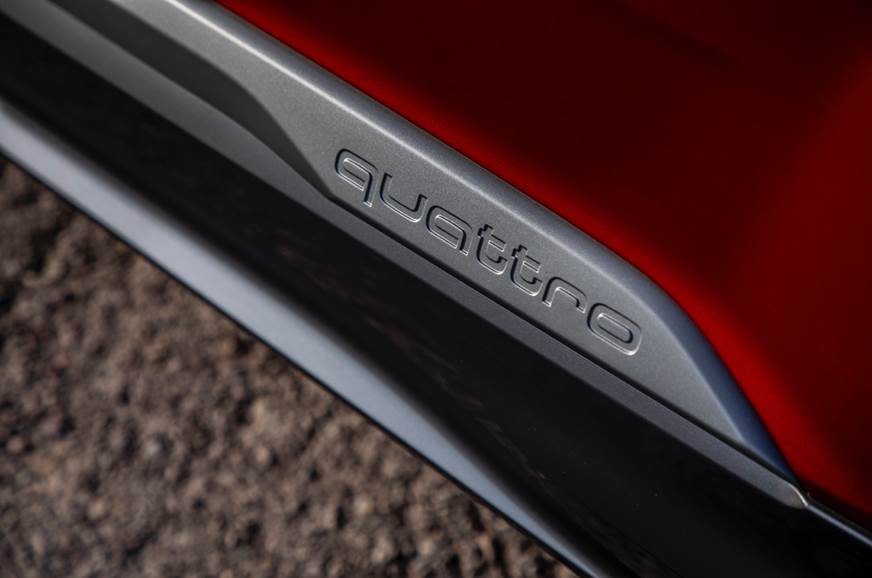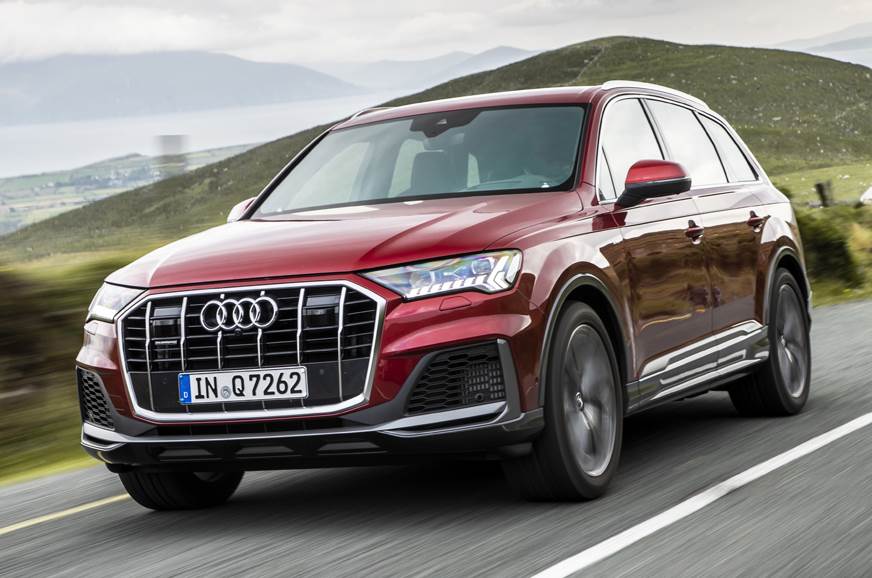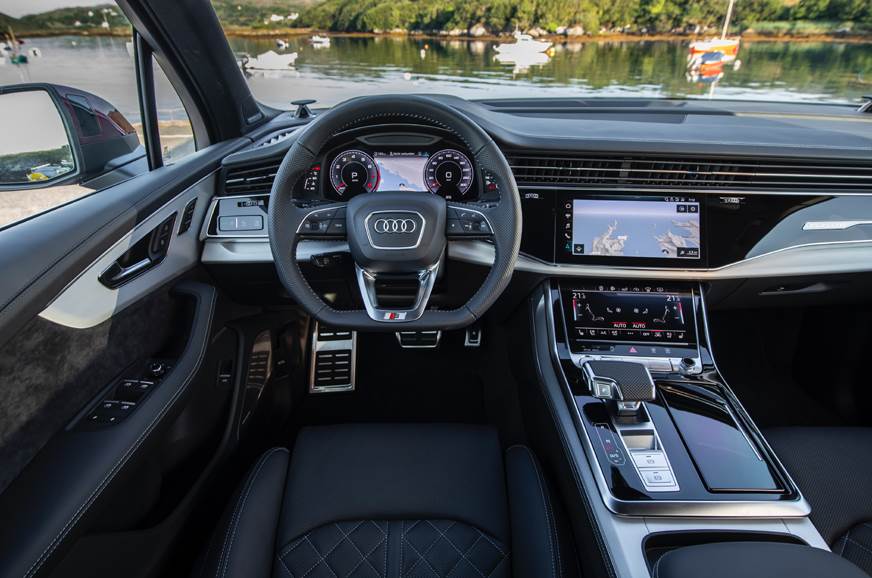



The first-generation Audi Q7 was the big luxury SUV to buy, when it came out in 2006. It was massive-looking on the outside, beautifully built on the inside, and what made it even more popular was that it was light, easy and entertaining to drive. Audi, however, pedalled back a bit on the second-gen Q7 – 300kg lighter on average, the new car is smaller and looks less imposing on the outside.
What is it?
Now, with the thoroughly revamped but yet-to-be-launched-in-India Q7, Audi is trying to get that imposing look back. The nose still isn’t quite as lofty, but it now gets a ‘more powerful’ look, courtesy the larger, octagonal single-frame grille, and also those massive air intakes that sit below each headlight, which look quite dramatic. Its signature ‘L’ shaped air-splitters give the chin plenty of definition and the now-standard HD Matrix lights also get Audi’s new signature LED design; the cars we are driving also come with laser lights. Walk around the rear and there’s now also a new chrome strip that runs between the tail-lights, making the SUV look a bit wider from the rear. And, though it doesn’t look quite as large, the new Q7 is now also 11mm longer, at 5,063mm.
While we only drove the five-seater version powered by a 340hp, 3.0-litre petrol, Audi, at a later stage, will also get a BS6 version of the 3.0 diesel. Both these units are mated to an 8-speed automatic gearbox and get a 48V mild-hybrid electrical system to enhance efficiency. In an effort to make them more efficient, they also get a coasting function that allows them to be driven for up to 40sec with the engine switched off. The new Q7 is also available with optional electromechanical active roll stabilisation and all-wheel steering to boost handling, both with standard steel spring or optional air suspension.
What’s it like on the inside?
On the inside, it’s clear… Audi has got its mojo back. The look of the cabin is very minimalist and techy, and what Audi designers have managed to do is allow the sheer quality of the piano black and chrome highlights to shine through. With the fair amount of brushed aluminium that has also been used to break up the mass and add to the quilted, perforated, contrast stitched leather (also in black), the look is complete. To add a bit of extra bling, the insides now get a third screen for the air con controls and various other functions; this now truly gives the cabin the look of a ‘glass cockpit’, as you are surrounded by three fair-sized screens, instrument panel included.
The new Q7 also features the latest version of Audi’s MMI infotainment system, featuring a main 10.1-inch screen and an optional head-up display. Since you now get a touchscreen, Audi has also deleted the MMI dial, which I must confess I missed, especially when on the move. Comfort on the large front seats is also excellent, and as this five-seater has massive legroom in the rear, sitting on the large and supportive bench is quite a treat too. We’ll, of course, get the seven-seat version here in India, and this time around, it will have place for a space-saver spare tyre under the floor, meaning you won’t need to put it on the seat next to you in the third row.
What’s it like to drive?
Make no mistake, this is still a heavy and big SUV, but the all-new, slightly sportier, setup on this S-line version makes a huge difference to how Audi’s behemoth drives. To begin with, despite the setup being a bit lower and stiffer, ride is actually better. Whereas the current car feels a bit sloppy and loose, especially over undulating sections, this one feels tight, nicely controlled, and extremely comfortable, all at the same time. There is a bit of a firm layer, but bump absorption still is excellent – the big wheels soak up the bumps with ease and what comes as a surprise is that, despite the 21-inch wheels, there’s no real ‘jigglyness’.
What’s also improved, apart from the ride, is the steering. Yes, it’s still light and easy like all Audis, but begin to corner this behemoth and it also feels a bit more connected now. And that gives the driver a lot more confidence, especially on a car of this size. What also adds to driving pleasure is that the new Q7 rolls less and feels tighter and more in control of its mass in corners. This, of course, is all down to the 48V system and the active anti-roll bars. And then, what improves the driving experience hugely is that this particular Q7 also has rear-wheel steering that makes this ‘bus’ feel more agile and happy to attack corners.
Audi says it will be the petrol that comes to India first. Now, this 340 horsepower turbocharged petrol V6 has plenty of grunt, and the good thing is that it just loves to rev. It takes a bit to get going at low engine speeds, but the unit is silent, smooth and also extremely responsive when you put your foot down. What’s also really nice is that, in its mid-range and even in top end, it actually revs and pulls like it’s a naturally aspirated engine.
Should I buy one?
Audi’s facelifted Q7 is very different looking from the current car. Imposing, fresh and quite attractive, it has the ability to get many appreciative glances. The insides are also thoroughly updated. So much so, in fact, that the cabin now looks almost all-new. And what has you going wow is that the black with chrome cabin is yet another high-water mark when it comes to minimalism and sophistication. The new Q7 also rides and drives better with its slightly sportier setup, and efficiency apart, the 55 TFSI petrol engine is also a good addition to the range. We still haven’t experienced the cabin with seven seats and the 231hp, 45 TDI diesel will only come a bit later, but one thing’s for sure, with this new facelift, Audi’s Q7 should be well and truly back in the game. Clearly one to have on your shortlist when it comes to Indian shores in 2020, at an expected price from Rs 74 lakh.
[“source=autocarindia”]